This article provides a detailed description of bonnie hats. This includes their origin, when and how they are worn, and types of bonnie hats. You will understand the benefits and disadvantages of wearing bonnie hats. Bonnie hats aren't restricted to military groups as civilians wear some at different events.
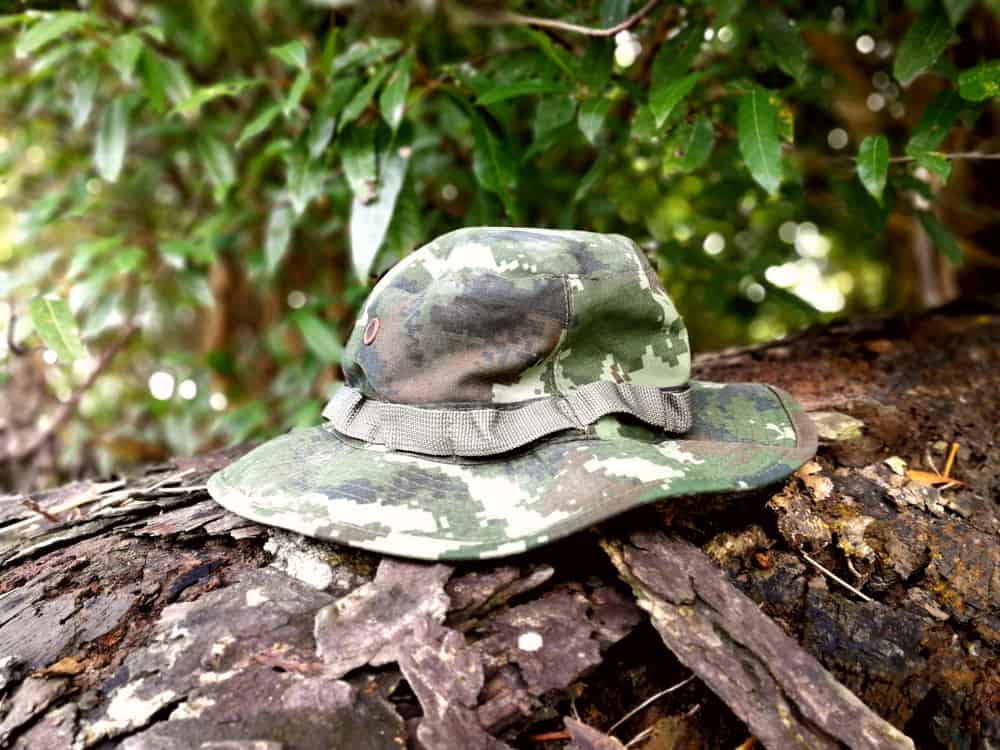
- A Bonnie hat is associated with the military forces.
- It has a design similar to that of a bucket hat but has a stiffer brim.
- It helps the military to camouflage with the additional vegetation.
What is a bonnie hat?
A military Boonie hat or Bonney hat is a form of a hat mostly used by the military forces in hot tropical climates as it has a wide-brim. It’s also referred to as a giggle hat that is an Australian army version to call the bonnie hat, and other people call it a bush hat as it has a wide brim down. However, giggle and bonnie hat is interchangeable terms even though there’s a slight difference. The Australian army giggle hat has a thinner brim.
A bonnie hat has floppy rims perfect for tromping through jungles, forests, and sun-drenched deserts. However, aside from the military using bonnie hats, today, people use them when enjoying outdoor activities like mountain climbing, backpacking, hiking, and trekking. They are designed for hot and humid climates making them more comfortable than helmets as they offer better protection against rain and U.V. rays of the sun.
Table of Contents
- What is a bonnie hat?
- Is a bonnie hat fashionable today?
- Materials used to make bonnie hats
- Types of bonnie hats
- How to wear it
- Pros and Cons of wearing a bonnie hat
- History of bonnie hat
Is a bonnie hat fashionable today?
A Bonnie hat is a head ware designed of necessity. They aren’t for fashion and are commonly worn by military and adventurous people for camouflage reasons.
Materials used to make bonnie hats
The most popular materials used to make bonnie hats are:
- Nylon
- Cotton
- Wool
- Linen
Types of bonnie hats
Woodland Camo bonnie hat
Click image for more info
This is the most common bonnie hat. It originated in the armed forces. This type of camouflage pattern provides a true definition of what bonnie is referred to. This woodland pattern came into use back in 1981 and continued until the mid-2000s with the U.S.U.S. armed forces. Woodland Camo bonnie hat has four different colors: green, sand, black, and brown with irregular markings.
Flecktarn bonnie hat
Click image for more info
The German Armed forces commonly use this type, but it’s similar to that of the U.S.U.S. army. The hats have their own camouflage pattern with the disruptive pattern. However, the number of colors present on the hats varies.
These hats can have three to six colors, but the most common pattern comprises five colors. Four colors are constant, which include dark green, red-brown, light green, and black. In Germany, the pattern was introduced in 1990. Today, the German armed force still uses the pattern, and terrains determine the color differences.
MultiCam bonnie hat
Click image for more info
The pattern originated in 2002. The U.S.U.S. army used the hats under varying conditions and environments. They have patterns consisting of seven colors developed by Crye Precision. This is among the patterns that replaced the woodland pattern as well as the 3-color desert pattern. The pattern is used in other nine countries alongside the U.SU.S.
Tigerstripe bonnie hat
Click image for more info
Tigerstripe camouflage is commonly used for jungle warfare at close quarters. The armed forces of South Vietnam used this type of hat, after which the U.S.U.S. adopted it in the 1960s during the Vietnam War. However, many other Asian countries adopted the pattern.
The base color in the hat’s pattern is khaki or light green. The pattern has broad black brushstrokes which look similar to tiger stripes.
MARPAT bonnie hat
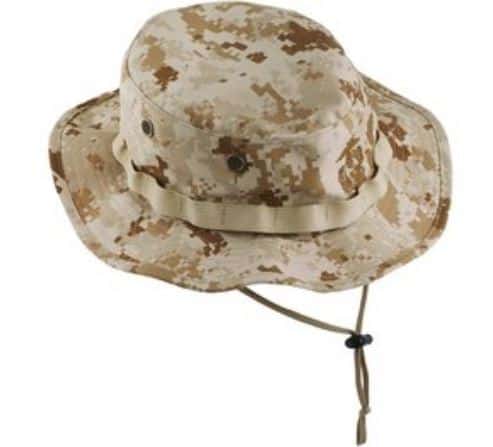
Source: My Navy Exchange
The US Marine Corps used the MARPAT pattern, which stands for “Marine Pattern.” The marine has used the pattern since 2002 after replacing its predecessor, the Camouflage Utility Uniform. The pattern consists of tiny rectangular boxes evenly spread all over the uniform. It’s a better blending camouflage compared to non-digital patterns like woodland patterns.
Desert digital bonnie hat
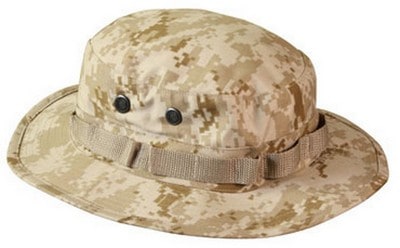
Source: Army Navy Shop
Desert digital camouflage pattern also uses a small pixel-like MARPAT pattern. They differ in color used. This pattern uses brown and sand, unlike the MARPAT that comprises green shades. Desert digital pattern has been in existence since the early 2000s after replacing the 3-color desert pattern.
Olive drab bonnie hat
Click image for more info
Olive comprises a dark yellowish-green color. Drab has a brownish-gray color. A combination of these colors leads to Olive Drab color. The U.S.U.S. used many versions of Olive Drab during World War II as a camouflage pattern. The color was used in uniforms, vehicles, and equipment. However, the color was later officially replaced in 1952 by an Olive Green color.
Ocean digital bonnie hat

Ocean digital camouflage comprises a combination of blue, black, white, and grey colored pixels. The Chinese army commonly uses it as its combat uniform.
Red digital bonnie hat
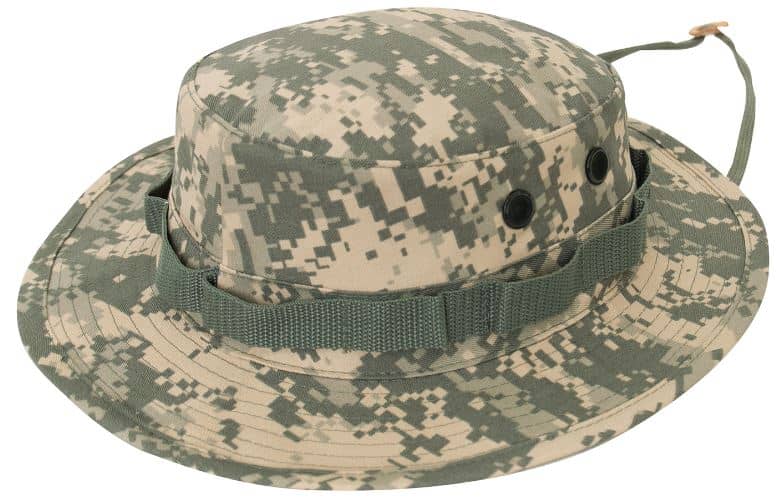
Source: Rothco
Red digital camouflage has red, white, gray, and black colored pixels, which make up the red digital camouflage pattern. The pattern offers a perfect blend during autumn and works best in red rock desert environments.
3D leaves bonnie hat
Click image for more info
This type of bonnie hat has 3D cloth parts coming out of it. The clothes are leaves-shaped, making the entire structure resemble a pile of leaves. It’s best to camouflage among forests, trees, leaves, and such natural habitats.
How to wear it
Wearing a bonnie hat might not be as easy as wearing a baseball cap. Sometimes, the retention strap string confuses people.
- The front strap method: You can wear the string on the bonnie hat in the front. This way, you won’t lose your hat after the wind blows it off as it will be thrown to your back. It’s important to tie the chin straps tightly.
- Real strap tied method: This is an ideal way to wear the Boonie hat. The straps are tied at the back of the head. If tight enough, the hat isn’t likely to be blown away by the wind.
- The tied on top method: Some people prefer to wear bonnie hats without straps. They loop the straps over the hat’s top and tie them hence looking like a cowboy hat. It isn’t the best way as it puts someone at great risk of sunburns since the tied straps pull up the brim sides, and also, it’s likely to be blown off by the wind.
- Under hat method: This method involves putting the straps on the head but under the bonnie hat. Unlike the tied on top technique, it’s a better method, as it helps to avoid sunburns.
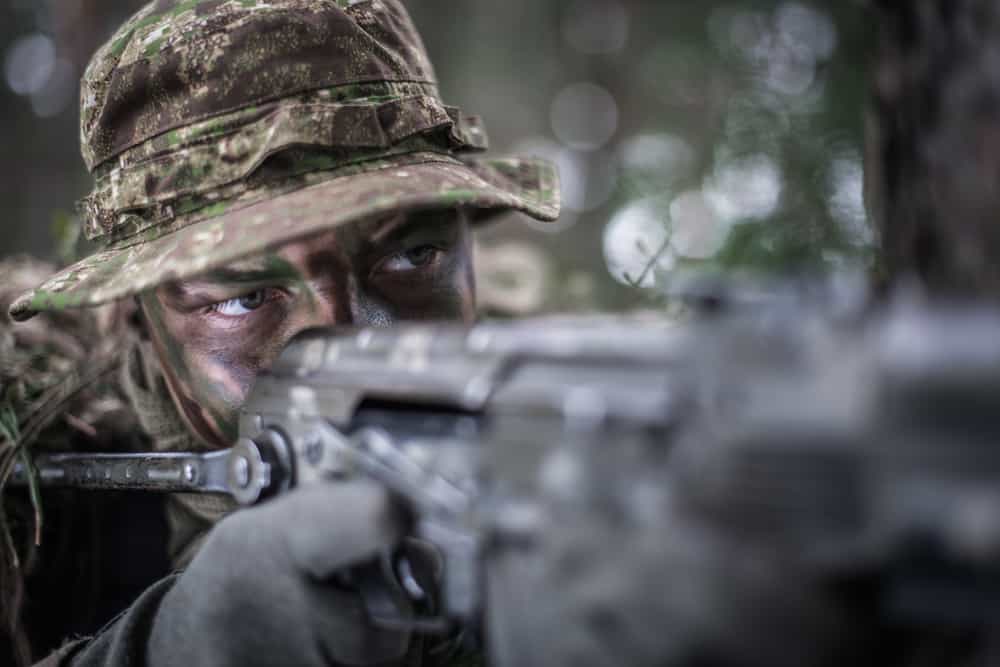
Pros and Cons of wearing a bonnie hat
Pros
- It offers U.V. protection in the summer hence referred to as a sun hat.
- Protects the hair from sun, wind, cold, and snow which can damage it
- It’s stylish, especially when worn with a military uniform of different colors and styles.
Cons
- The inappropriate wearing of a bonnie hat with loose straps can lead to a choking experience if the hat is trapped on a tree branch.
- When the wide brim gets wet, it reduces the wearer’s field of view.
History of bonnie hat
The origin of bonnie hats is difficult to pinpoint. However, in the late 1930s, the U.S.U.S. military used hats with wide brims. The hats were made of denim and, after that, herringbone twill. The hats resembled the bonnie hats we see today. On the other hand, bonnie hats can be traced back to the war in Vietnam. Bonnie hats were largely used and gave relief to every soldier encountering the extremely harsh weather conditions.









